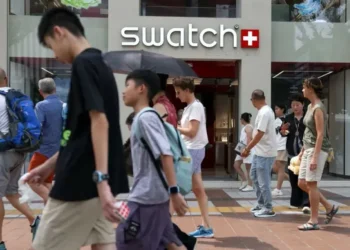“The Amazigh tribes built these ancient structures from the mountains around us,” says key keeper Hassan Louz, as he pushes open a palm-wood door to reveal the labyrinthine vaults of one of Morocco’s oldest igoudar – storehouses built by the region’s Indigenous tribes centuries ago to protect their most valuable possessions.
Ingeniously built from the jagged stone, adobe clay and palm trees of the Anti-Atlas Mountains, some 600 igoudar (the plural form of agadir – Amazigh for “wall” or “compound”) dot the windswept landscapes of the Souss-Massa region in southern Morocco.
They tell the story of how these sun-scorched uplands were first settled around the 15th Century when the Amazigh, or “free people” – North Africa’s Indigenous tribes – began to abandon nomadism, adopt farming and establish permanent desert outposts.
Widely regarded by historians as among the world’s oldest banking systems, igoudar eventually became the centre of Amazigh influence in the region, acting as spaces of governance, trade and debate as well as communal storehouses. Today, they offer a glimpse into Morocco’s Indigenous heritage amidst some of the country’s most ruggedly beautiful, untamed and least explored landscapes.

Sacred storehouses
The Amazigh tribes first built igoudar to store their community’s treasures; not only the grains, nuts, oils and dates harvested from southern Morocco’s fertile valleys; but also the woven carpets, silver jewellery and legal documents belonging to local families. Their position – situated strategically amid the rocky outcrops of the Anti-Atlas Mountains – was carefully chosen to provide protection against the dangers of the surrounding desert: looting bandits, drought and warring tribes.

The centre of tribal life
Igoudar quickly became the focal point of Amazigh life, also acting as mosques, debate halls and shelter during times of conflict. Over the years, underground water tanks, apiaries and blacksmiths’ forges were incorporated into the fortified structures as the once-nomadic Amazigh tribes increasingly invested in local igoudar as impregnable citadels for their survival.
“Those who passed through the region would stop off at igoudar,” explains Yasmine Lakmali, an Amazigh woman from the regional hub of Tafraoute. “Camel caravans arriving into the valleys after weeks crossing the Sahara would stay for respite and trade before arriving to the Atlantic Coast, taking with them the produce, jewellery and textiles of the tribes.”

Cooperation in the face of adversity
“Because of constant threats, the tribes organised and ran igoudar as a community, similar to modern cooperatives,” says Mohamed El Houssmi, a local student of Amazigh architecture. “For example, each tribe would contribute its surplus goods – whether food, clothing or other essentials – which would then be redistributed according to the needs of each family.”
Any deposit made in igoudar vaults would also be accompanied by mandatory donations of grain, the sum of which would be redistributed at the end of the harvest so no one in the tribe went hungry. “These buildings represent an incredible amount of cooperation and resourcefulness in the face of extreme hardship,” Mohamed adds.
 Guardians appointed as protectors
Guardians appointed as protectors
“The elders – or Inflas – of the tribes would appoint special guards called ‘Amins’ to watch over their agadir day and night,” says Hassan Louz,the current custodian of the Ikounka village’s 400-year-old agadir. The role of an Amin (Arabic for faithful, honest or trustworthy) carried considerable responsibility. They were assigned to maintain locks, settle disputes and enforce the law of the tribe (which demanded strict punishment for theft or fraud), and as such, enjoyed their own private quarters and adjoining mosque to ensure the agadir’s round-the-clock protection.
 Ancient engineering for agriculture
Ancient engineering for agriculture
Agriculture has always thrived in southern Morocco, sheltered from the harsh Saharan climate by the surrounding mountains and sustained by ancient irrigation systems called seguias that channel water through valleys of wheat, date trees and berry bushes. “Produce, especially grain, was used as bartering currency by the early tribes: they wanted to protect it,” Louz explains.
More like this:
• The best travel photographs from around the globe
• The masters of a 5,000-year-old craft
• The pilgrimage sites of Iraq’s timeless and holy cities
To preserve crops in the unforgiving desert climate, igoudar use air ducts to channel heat upwards, regulating temperature with the outside, while passages between vaults allow for cats to roam free, keeping mice and rats away from the stores of grain.
 A tradition preserved
A tradition preserved
Many of Morocco’s igoudar have fallen out of use, now preserved as historical sites and reminders of a fading tradition, but in some areas these buildings are still hugely important. In Aït Kine, an oasis village at the edge of one of the Anti-Atlas’s southernmost valleys, the local agadir remains the cornerstone of the community: a place to store crops, jewellery and family texts under the watchful eye of Lahcen Boutirane, the agadir’s key-wielding Amin. Weddings, religious events and social gatherings are still held within the agadir’s rammed-earth walls and the compound’s vaults still house the belongings of many residents.

Records of the past
Leading us up a palm trunk ladder to the second floor of vaults, Boutirane prises open the door to reveal piles of legal texts, religious documents and ancient medicinal recipes inscribed on palm wood and parchment. He explains how each village appointed a notary who took invoices for everything deposited in the agadir’s vaults. These charters, written in Arabic and dating back hundreds of years, detail the possessions of every villager over the generations, and are considered sacred by the community, diligently preserved and kept as records of the past.

Indigenous architecture
“These buildings reflect our elders’ deep connection with the landscape,” says local Amazigh educator Yassmina El Houssmi. The trunks of palm trees, felled from nearby oases, form the staircases and ceilings, whilst adobe clay dredged from dry riverbanks makes up the walls. In the rockier Anti-Atlas, igoudar are built with stone slabs from surrounding cliffs, stacked in a dry stone composition. “Each building is a remarkable architectural and environmental achievement,” Yassmina says. “Their carbon footprint is zero, all materials are biodegradable and locally sourced, and the agadir regulates temperature naturally, allowing it to last for hundreds of years.”
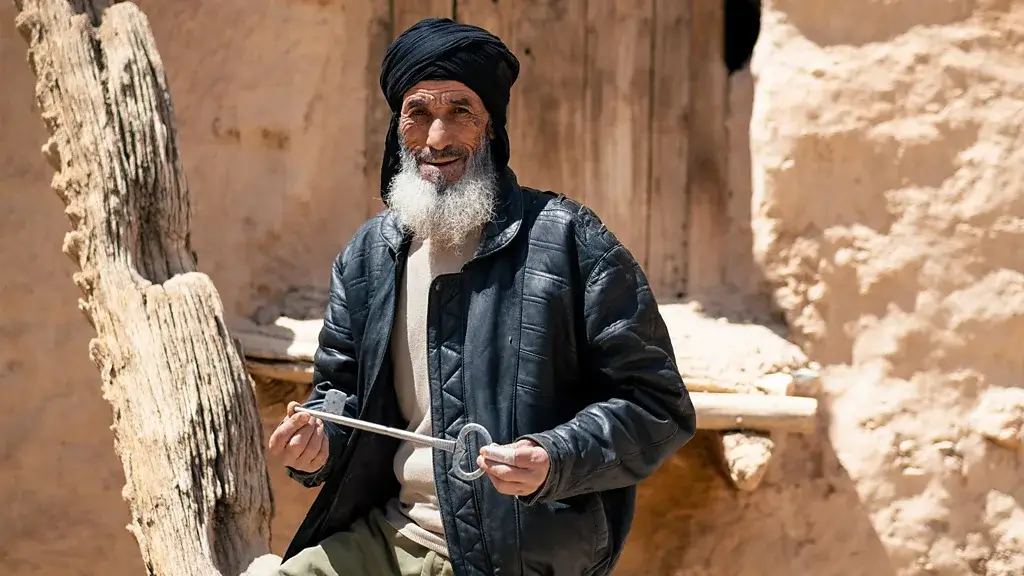
Looking to the future
Despite a number of recent earthquakes and rural depopulation, the communal spirit that first gave rise to these buildings perseveres, as painstaking restoration by villagers returns many of them to their original glory. “The Moroccan government has begun working with artists and engineers to restore these precious buildings,” says Mohamed. “Training programmes ensure the age-old techniques of using natural materials and traditional construction methods are not forgotten and we can ensure these igoudar, which contain the Indigenous heritage of the region, continue to look out over these spectacular landscapes for years to come.”
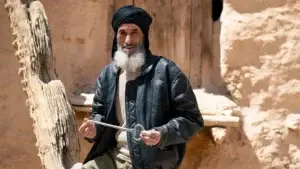
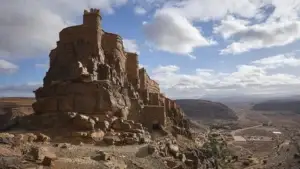
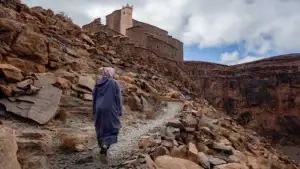
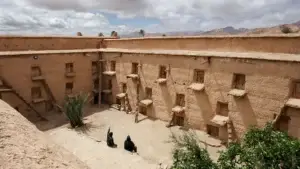
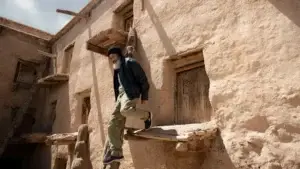
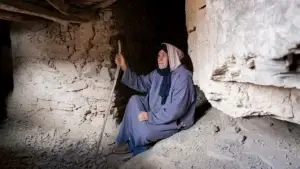
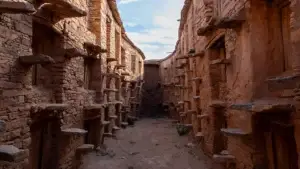
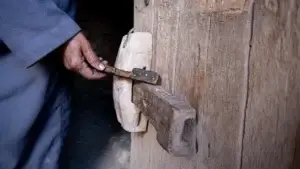

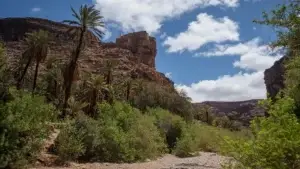


 Guardians appointed as protectors
Guardians appointed as protectors Ancient engineering for agriculture
Ancient engineering for agriculture A tradition preserved
A tradition preserved







